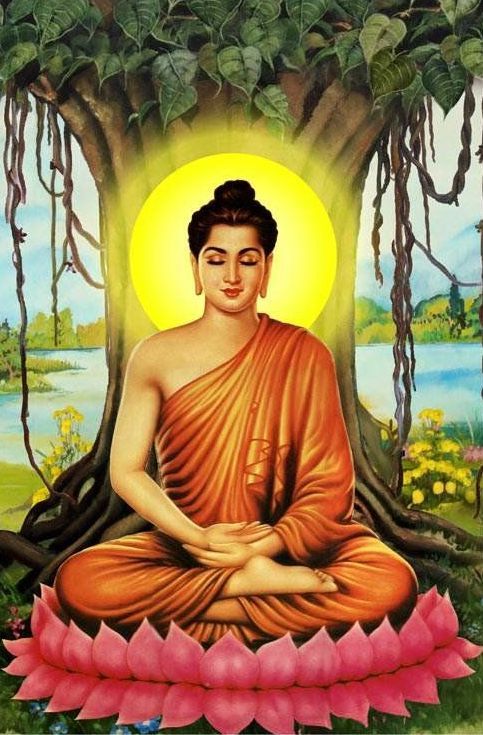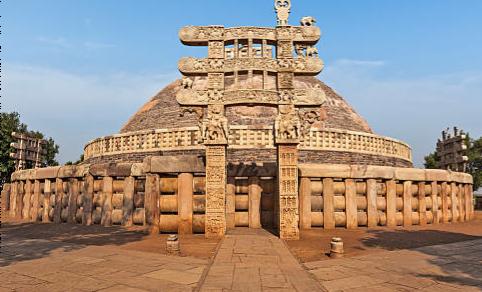Buddha, Upanishads and Monasteries
2500 years back from today, a new thought came to live. His name was Siddhartha, popularly known as Gautama. He was the founder of Buddhism beliefs. The lives of the people began to change since that time. Manajanapadas were becoming very powerful, new cities were developing. People were in search of true meaning and motive of life.

The Buddha belonged to the Sakta Gana and Kshtriya Varna. He was a very curious child since his young age. When he was very young he left behind all the comforts of home in search of knowledge. He wandered around for many years, held discussion with my great thinkers and philosophers. He then started on his own path of realisation and meditated all day long for several years under a Peeple tree at Bodh Gaya, in Bihar. Its here that he attained enlightenment and came to be known as Buddha, the Wise one.
He then reached Sarnath, in Varanasi where he preached for the first time. He led his life in this way only, wandering from places to places on foot, preaching people the true meanings of life, till he breathed his last in Kusinara.
In his teachings he mentioned that life is full f suffering and unhappiness because we have so many desires, which when doesn’t get fulfilled, it leads to unhappiness. Even when we get what we want we have cravings for more. This means that we are never satisfied. This constant desires leads to dissatisfaction and unhappiness. Buddha explained that this craving can be overcome by living life in moderation. He described it as thirst or tanha.
He preached that one should be kind to every one including animals. He believed that whatever karma or deeds we do whether good or bad, comes back to us either in this birth or next. He preached in the Language of the ordinary people, Prakrit, so that everyone could understand them. The stupa at Sarnath is believed to be the place where Buddha first preached his message.

Upanishads
Many people had many questions in their mind. They were in search of questions like life after death, what survives after death, what is atman or soul , is atman or Brahman remains ever after. Their ideas were recorded in Upanishads, the later version of the vedic texts. Upanishads literally means ' approaching and sitting near’. The ideas are recorded in terms of conversation between teachers and students.
Men, rajas and the Brahmins were maiy the Upanishads thinkers. The famous woman thinker , Gargi is known for her learning and participation in debates helds in courts. However the poor were not allowed to be the part of these discussions, but an exception was there. Satyakama Haveli, son of slave woman Haveli, who had keen interest in knowing about the truths. He was accepted as a student by one of the Brahmin named Gautama. He appeared as one of the best thinker if his time.
This was also the time when a scholar called Panini prepared grammar in Sanskrit. He arranged vowels and consonants in a special way and used them as formulae like Algebra in Mathematics.

 Indira Gandhi Memorial High School
Indira Gandhi Memorial High School
